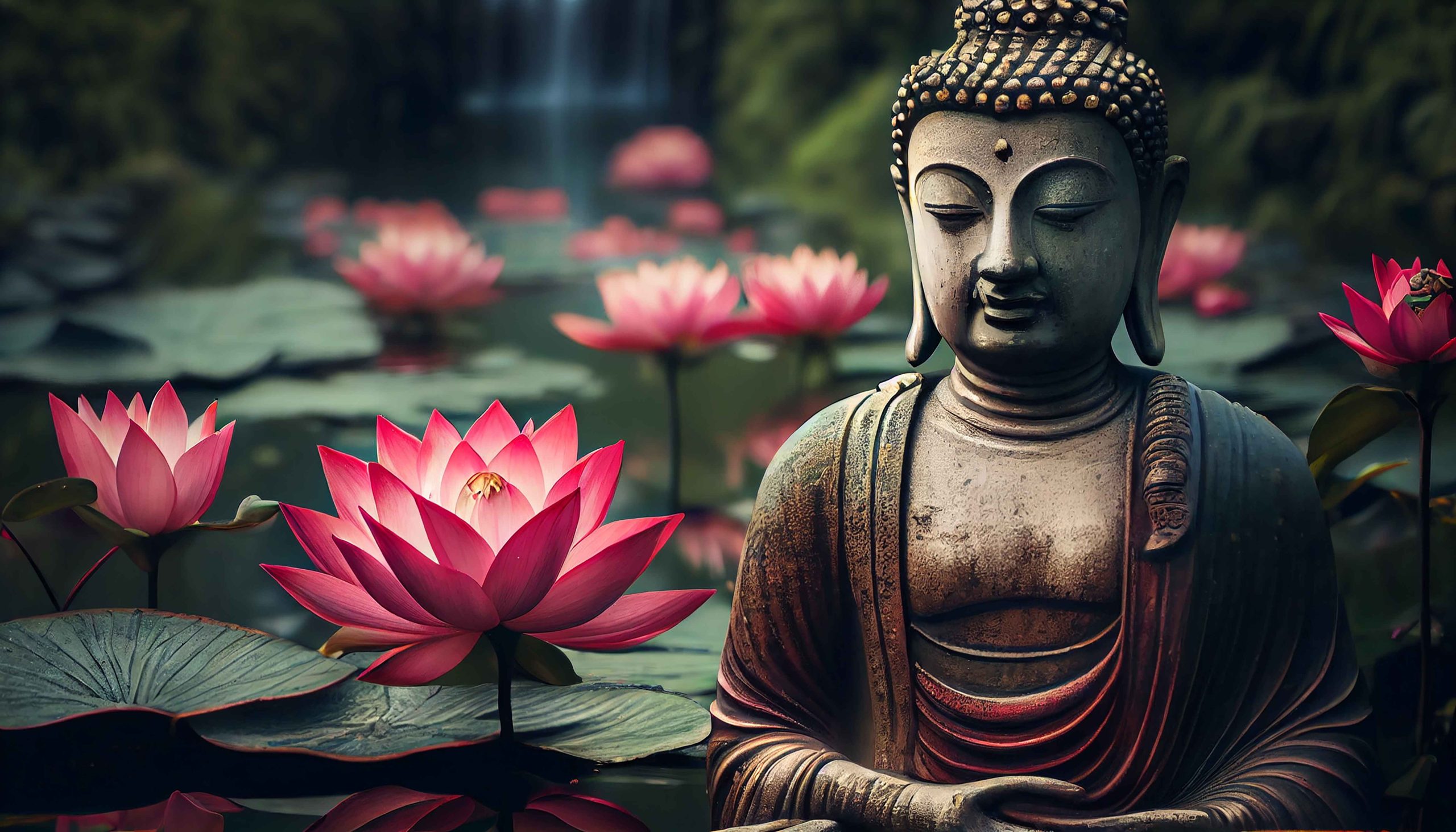Years ago, my life was chaos. My mind raced like a wild horse, and I craved inner peace. Then, I stumbled upon Buddhism in a bookstore. Mindfulness and meditation became my lifeline. It wasn’t an escape from chaos; it was finding serenity within it. As I practiced, I found stillness, patience, and compassion. Buddhism transformed me and brought profound wisdom.
The Roots of Buddha Meditation
The roots of Buddha meditation stretch back over 2,500 years to the life and wisdom of Siddhartha Gautama. This remarkable soul, later known as the Buddha, embarked on a quest to uncover the causes of human suffering and find a way to break free from its chains. Through deep self-reflection and meditation, he unearthed profound insights into the human mind and the nature of existence itself.
Concentration and Kammatthana
Buddhist meditation begins with a simple yet powerful concept: kammatthana. It’s like a spotlight for your mind, focusing your attention on one chosen thing. Think of it as a mental gym where you train your mind to pay attention to what really matters. What you choose as your kammatthana can vary, it could be colors, lights, or even virtues like friendliness. The key is to turn your attention inward, tuning out the noise of the external world.
Types of Buddha Meditation
Explore the world of Buddhist meditation, where your mind becomes a canvas for enlightenment, and your soul embarks on a journey to be free from suffering. There are different ways to meditate in Buddhism, each like a precious gem for your inner growth. Let’s look at these meditation methods together:
- Insight Meditation (Vipassana): This is about finding truth and understanding life. By paying close attention to your feelings, thoughts, and emotions, you learn about the impermanence of things and the idea that there’s no fixed self.
- Concentration Meditation (Samatha): It’s like finding peace and stillness in your mind. You focus on one thing, like your breath or a word, and as distractions fade away, your mind becomes clear and calm.
- Loving-kindness Meditation (Metta): This is about spreading love and kindness. By repeating kind phrases, you build goodwill for yourself and others, connecting everyone together.
- Compassion Meditation (Karuna): Here, you light the flame of compassion in your heart. You think about the suffering of others, and your compassion can heal and comfort them.
- Sympathetic Joy Meditation (Mudita): It’s like celebrating the happiness of others. Instead of feeling jealous, you share in their joy and create harmony.
- Body Scan Meditation: You explore the sensations in your body, connecting your physical and spiritual selves.
- Walking Meditation: You practice mindfulness while walking, paying attention to each step and experiencing the present moment.
- Zen Meditation (Zazen): It’s about being still and fully present. With a calm posture, you discover wisdom and clarity through silence and simplicity.
- Tonglen Meditation: This is all about turning suffering into love. You breathe in the pain of others and breathe out relief and compassion, spreading light in the world.
- Analytical Meditation: Your mind becomes like a philosopher’s stone. You think deeply about Buddhist teachings to gain wisdom and live a more meaningful life.
How to do Buddha Meditation?
Here are some tips on how to do Buddha meditation:-
- Find a Quiet Place: First, find a quiet and comfortable place where you won’t be disturbed. It could be a quiet room or a peaceful spot in nature.
- Sit Comfortably: Sit down in a comfortable position. You can sit on a chair or on the floor, just make sure your back is straight.
- Focus on Your Breath: Close your eyes and start to pay attention to your breath. Breathe in slowly through your nose and then breathe out through your mouth. Try to make your breath calm and steady.
- Be Mindful: While you’re breathing, try to be mindful of the present moment. This means being aware of your breath and the sensations in your body without thinking about other things.
- Let Go of Thoughts: If other thoughts come into your mind, don’t worry. Just let them go like passing clouds and bring your focus back to your breath.
- Picture Buddha: You can also imagine a peaceful and kind image of Buddha in your mind if it helps you feel more centered and calm.
- Practice Regularly: Try to do this meditation every day, even if it’s just for a few minutes. With practice, it will become easier to find peace and clarity in your mind.
- Be Patient: Remember that meditation takes time to master. Be patient with yourself and keep trying. Over time, you may find it brings more peace and happiness into your life.
The Power of Mindfulness
Buddha meditation offers a path to inner peace and enlightenment. Through regular practice, you can tame the restless mind, find tranquillity, and experience a profound sense of unity with the world around you. It’s like finding a quiet oasis in the midst of life’s storm, a sanctuary where you can let go of unnecessary worries and anxieties.
Benefits Beyond Meditation
The gifts of Buddha meditation extend far beyond the moments of quiet contemplation. Research on the benefits of Buddha meditation has shown that it can lead to increased mindfulness, reduced stress and anxiety, improved emotional regulation, and a greater sense of overall well-being. It can reduce stress, sharpen your focus, and elevate your emotional well-being. By understanding yourself better, you can cultivate greater compassion and empathy for others, leading to more harmonious relationships and a deeper connection to the world.
Conclusion
In the fast-paced, chaotic world we live in, the serenity and understanding offered by Buddha meditation are like precious gems waiting to be discovered. Rooted in the teachings of the Buddha, this practice invites you to explore your own mind with mindfulness and awareness. By doing so, you can find peace in the present moment and enrich your life with a deeper sense of wisdom and compassion. So, why not embark on this transformative journey and discover the serenity that Buddha meditation can bring to your life? The adventure awaits – all you need to do is take the first step inward.


